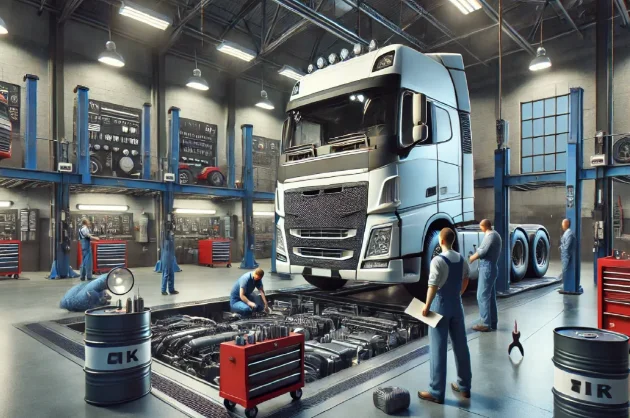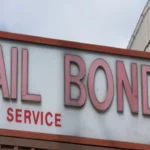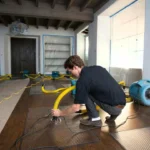In the world of heavy industries, downtime can spell disaster. Every minute a machine is offline means potential revenue lost and costs that quickly add up. The goal? Avoid costly shutdowns at all costs. But how? This blog post will cover innovative repair solutions that can keep your operations running smoothly, ensuring productivity and profitability.
Understanding the High Stakes of Industrial Downtime
When machines stop working in heavy industries, it’s not just a minor inconvenience. Every hour lost has a ripple effect on production schedules, employee productivity, and even customer satisfaction. Imagine a concrete trailer sitting idle on a construction site because a critical component failed. The halted project can delay entire timelines, impacting everything from subsequent phases to client expectations.
The costs associated with such downtime go beyond immediate financial losses. There’s a reputational risk too—clients may lose confidence if delays become consistent. Understanding these stakes sets the stage for why innovative repair solutions are crucial.
The Role of Predictive Maintenance in Prevention
Predictive maintenance has emerged as a game-changer. Unlike traditional maintenance, which often reacts to breakdowns, predictive strategies use data to anticipate failures before they happen. Sensors on equipment collect real-time data, analyzing wear and tear in components. This allows for timely interventions, preventing breakdowns that would require lengthy repairs or replacements.
Integrating predictive maintenance systems can seem daunting, but the investment pays off quickly. By catching issues early, companies can schedule repairs during planned downtimes, reducing the impact on overall production. This strategic approach minimizes costly shutdowns and extends the lifespan of machinery.
Leveraging Cutting-Edge Technologies for Repairs
Innovative technology is revolutionizing how repairs are approached in heavy industries. 3D printing, for example, is no longer just a futuristic concept. It’s being used to produce parts on-demand, drastically reducing the wait times associated with sourcing replacement parts from distant suppliers. This technology is particularly useful for older equipment, where parts may be difficult to find.
Another breakthrough is the use of drones for inspections. They can access hard-to-reach areas, capturing detailed images that help identify problems without the need for scaffolding or other expensive setups. This not only speeds up the inspection process but also ensures that potential issues are addressed before they escalate.
Remote Monitoring and Its Impact on Uptime
Remote monitoring systems have become indispensable. They provide constant vigilance, alerting teams when anomalies are detected. This real-time insight enables quick response times, allowing maintenance teams to address small issues before they become big problems.
These systems are particularly effective in industries with vast, distributed operations. For instance, in the oil and gas sector, pipelines stretch for miles. Remote monitoring can detect leaks or pressure drops immediately, preventing what could become catastrophic failures.
Training and Development for Skilled Maintenance Teams
While technology plays a crucial role, having skilled personnel who understand how to use these tools is equally important. Investing in training programs ensures that your maintenance team can effectively leverage advanced technologies. Skilled workers can make informed decisions, implementing repairs efficiently and safely.
Ongoing development programs also keep teams updated on the latest repair techniques and technologies. This continuous learning culture not only benefits the company but also encourages employee retention, as workers feel valued and capable in their roles.
Collaborative Efforts with Repair Specialists
Sometimes, it pays to bring in the experts. Partnering with specialized repair companies can provide access to specialized skills and equipment. These specialists often have deep expertise in certain types of machinery, offering repair solutions that internal teams may not be equipped to handle.
Collaboration can also lead to innovation. Repair specialists bring fresh perspectives and new ideas, potentially introducing more efficient methods or tools that can be adopted in-house. This relationship can be a valuable asset, particularly for complex or high-stakes repairs.
Ensuring Compliance with Industry Standards
Staying compliant with industry regulations is non-negotiable. Non-compliance can lead to fines or operational shutdowns—costly outcomes that can be avoided with proper diligence. Regular audits and adherence to safety standards ensure that repairs are not only effective but also align with legal requirements.
Compliance involves keeping up-to-date with changing regulations. Being proactive in this regard prevents last-minute scrambles that can disrupt operations. It also reinforces safety, protecting both employees and equipment.
Continuous Improvement Through Feedback Loops
Implementing a feedback system can be incredibly beneficial. Gathering insights from maintenance teams, operators, and even external partners helps identify areas for improvement. This continuous loop of feedback allows companies to refine their repair processes, making them more efficient over time.
Listening to those on the front lines provides valuable information that management might overlook. Incorporating their suggestions into strategic planning can lead to more effective repair solutions and ultimately, fewer costly shutdowns.
Cost-Benefit Analysis of Innovative Repair Solutions
Implementing innovative repair solutions requires investment. However, conducting a cost-benefit analysis often reveals that these upfront costs are justified by long-term savings. Reduced downtime, enhanced equipment lifespan, and improved safety all contribute to a healthier bottom line.
Companies should also consider the intangible benefits, like increased employee morale and customer satisfaction. Preventing costly shutdowns not only safeguards revenue but also strengthens the company’s reputation.
The Future of Heavy Industries Repair Solutions
The future looks promising as technology continues to advance. Innovations like AI-driven diagnostics, augmented reality for repair guidance, and even more sophisticated predictive analytics are on the horizon. Staying informed about these developments keeps your company ahead of the curve, ready to implement new solutions as they become viable.
Final Thoughts on Avoiding Costly Shutdowns
Innovative repair solutions are not just a luxury—they’re a necessity for surviving and thriving in today’s competitive heavy industries landscape. By investing in advanced technologies, skilled personnel, and strategic partnerships, companies can minimize downtime and maximize efficiency.
For those looking to enhance their repair strategies, now is the time to explore these innovative solutions. Doing so not only protects your operations but positions your business as a leader in reliability and performance.

Shannon Reyes is a seasoned writer with a knack for crafting engaging blogs on a variety of service industries, including plumbing, cleansing, moving, pest control, and roofing. With a keen eye for detail and a passion for helping readers navigate complex topics, Shannon brings her expertise to life through informative and accessible content.










